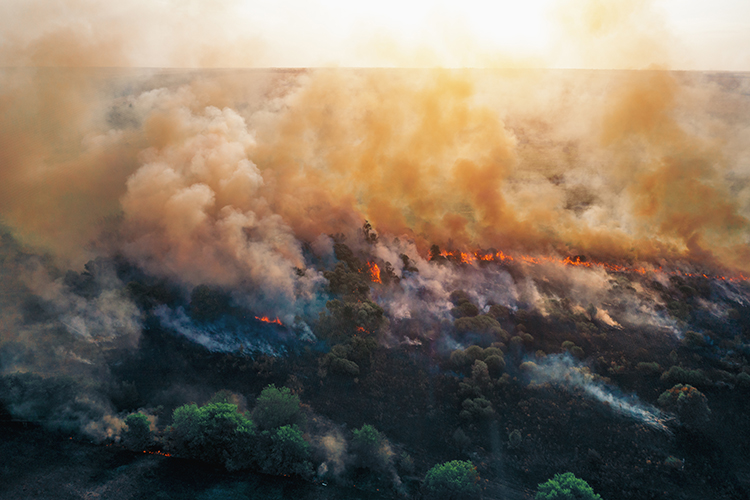
In recent years and decades, the near-constant dry weather conditions of the western U.S. have not only made farming more difficult but also caused more frequent and more intense wildfires that ravage land and leave clouds of smoke in their wake. Try wrapping your head around the fact that 10.3 million acres burned across the U.S. in 2020, the most since 1960. For humans in the direct path of these fires, evacuation is necessary, and the damage is unimaginable. Others who find themselves near the blazes but not in immediate danger are warned to stay inside to avoid smoke inhalation.
Is there anything to be done, though, for animals who remain exposed to the smoke particles?
Western dairy farmers have considered this question as they have battled blazes near their farms in recent years. A team of researchers from the University of Idaho stepped up to investigate the effects of smoke inhalation on dairy animals, and the production and health effects they saw lingered for days after the smoke cleared.
The scientists found that milk production in the cows they monitored at the university’s Dairy Center declined roughly 2.5 pounds per animal for every 100 micrograms per cubic meter rise in airborne particulates from the smoke. On the worst days, particulate levels reached 300 micrograms per cubic meter. The group speculated that the production decline may be due to impaired udder development or cellular turnover, or disruption of endocrine or metabolism functions.
This initial research was conducted in the summer of 2020, when the region had seven straight days where smoke concentration climbed above the Environmental Protection Agency’s standards for human health. The cumulative effect of constant smoke pressure likely contributed to the cows’ even steeper milk drop off after the air cleared, the researchers said. Smoke-exposed cows also had a slight reduction in milk protein level.
When analyzing blood samples, the Idaho team found higher levels of carbon dioxide, partially because respiration rate climbed. They also concluded that levels of immune cells related to infection and allergic reactions were greater, and immune responses were also observed when the group studied the effect of smoke on dairy calves the following summer. Calves exposed to heavy smoke had fewer white blood cells.
Unfortunately, there is little a farmer might do to prevent a wildfire from moving in their direction, and smoke may stretch much farther than the actual flames. To limit the effects fires may have on dairy animals, the research team advised using enclosed barns when they are available and possibly even air filters in a confined environment. Limiting animal exertion on smoky days is also recommended.








